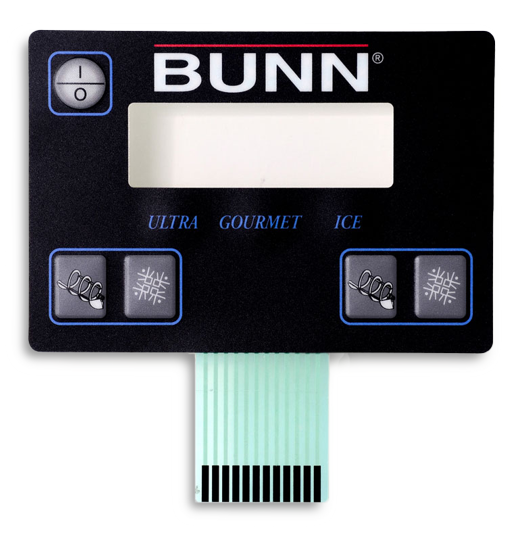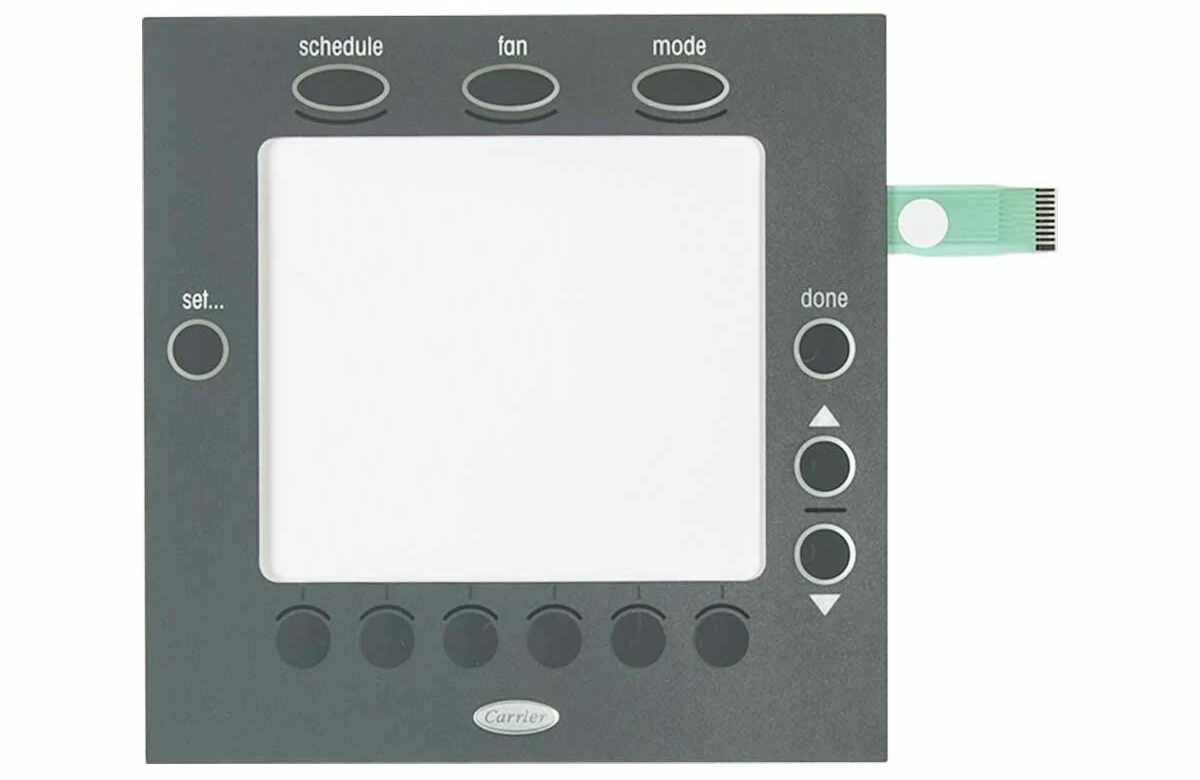Top-Tier Membrane Switch Manufacturer with Quality Accreditation
Top-Tier Membrane Switch Manufacturer with Quality Accreditation
Blog Article
Checking Out the Production Refine of Membrane Switch for Numerous Industries
The production process of Membrane buttons is a complex undertaking that demands precision and attention to information. From choosing appropriate products to carrying out extensive quality assurance steps, each action plays a vital duty in making certain performance. Numerous sectors, including vehicle and medical, rely upon these elements for their special applications. Understanding the details of this process discloses significant insights into exactly how these buttons are created and their effect across diverse fields.
Understanding Membrane Switches: A Review

Trick Materials Made Use Of in Membrane Switch Manufacturing
In Membrane switch manufacturing, the selection of crucial materials significantly influences functionality and durability. Conductive materials, adhesives, and finishes play vital duties, while substrate choice influences overall performance and dependability. Understanding these parts is crucial for optimizing the layout and production of Membrane switches.
Conductive Materials Review
Conductive products play a crucial function in the functionality of Membrane buttons, making certain trustworthy electrical links within the tool. Commonly made use of materials include silver, copper, and carbon-based inks, each offering distinctive advantages. Silver is preferred for its high conductivity and sturdiness, making it perfect for applications calling for durable efficiency. Copper, while somewhat less conductive than silver, is an affordable option often made use of in printed circuits. Carbon-based inks provide a flexible choice, suitable for applications where versatility and lower expenses are focused on, although they have actually reduced conductivity compared to steel choices. The option of conductive products directly affects the overall dependability, life expectancy, and performance of the Membrane switch, making it a vital factor to consider in the manufacturing procedure.
Adhesives and Coatings
Adhesives and finishings are important components in the production of Membrane buttons, offering essential bonding and protective homes. These products ensure that various layers of the switch, consisting of visuals overlays and circuitry, adhere firmly to each other, boosting resilience and capability. Commonly utilized adhesives consist of pressure-sensitive adhesives (PSAs) and epoxy-based solutions, which provide strong attachment and resilience. Coatings, such as polyurethane or acrylic, offer to safeguard versus ecological aspects, including wetness, abrasion, and chemicals. Furthermore, coverings can boost tactile comments and visual appeal, adding to the overall customer experience. The choice of proper adhesives and finishes is critical for maximizing performance and durability in diverse applications throughout numerous markets, making sure that Membrane switches meet details operational needs.
Substrate Selection Factors
Substratum selection plays an important duty in the production of Membrane buttons, as it substantially influences their general performance and longevity. Secret products such as polyester, polycarbonate, and versatile printed circuit boards (FPCBs) are typically utilized for their unique buildings. Polyester is favored for its cost-effectiveness and resistance to abrasion, making it ideal for applications with high wear. Polycarbonate deals superior clearness and effect resistance, perfect for atmospheres calling for high exposure. FPCBs offer boosted versatility and are often used in complicated styles. The choice of substrate also influences aspects like thermal stability, chemical resistance, and simplicity of printing. Eventually, picking the appropriate substratum is vital for ensuring the capability and longevity of Membrane changes throughout numerous markets.
The Design Process of Membrane Switches Over
The style procedure of Membrane buttons is a crucial stage that significantly influences the performance and visual appeals of the end product - membrane switch manufacturer. It begins with specifying the details needs of the application, consisting of measurements, button format, and tactile comments preferences. Designers should think about customer communication, making sure that the switch is user-friendly and accessible.Next, products are picked based on longevity, versatility, and environmental resistance. The combination of graphics and branding aspects is likewise essential, as it improves aesthetic appeal and interaction. Prototyping enables iterative screening, enabling changes based on user feedback and efficiency evaluations.Additionally, the style has to represent the electric parts, such as circuits and adapters, guaranteeing dependability and simplicity of use. Ultimately, a successful style integrates functionality, visual appeals, and user experience, leading the way for efficient manufacturing and durable efficiency in numerous markets
Printing Methods for Membrane Switches
The printing techniques utilized in Membrane button production play a necessary duty in identifying the end product's quality and functionality. Display printing offers advantages such as sturdiness and vibrant color application, while electronic printing technologies offer versatility and precision in layout. Comprehending these techniques can greatly influence the total performance of Membrane switches in numerous applications.
Display Printing Benefits
Numerous advantages make screen printing a preferred method for producing Membrane switches. This method enables high-quality, vivid colors and comprehensive styles, which are crucial for interface applications. Screen printing is specifically efficient for using thick ink layers, enhancing durability and responsive comments. Furthermore, it supplies excellent adhesion to numerous substratums, making sure durability in demanding settings. The process is affordable for big manufacturing runs, as it decreases configuration time and waste. Moreover, display printing supports a vast array of inks, consisting of specialty and UV-curable choices, allowing flexibility in style. Its ability to create regular results throughout numerous units makes it a dependable choice for manufacturers intending for high quality and performance in Membrane switch manufacturing.
Digital Printing Innovations

Innovations in digital printing modern technology are changing the manufacturing of Membrane buttons, supplying makers ingenious services that boost layout versatility and performance. Digital printing permits detailed styles and high-resolution graphics, enabling custom branding and functionality without the restrictions of traditional techniques. This technique decreases configuration times and expenses, helping with much shorter manufacturing runs and marginal waste, making it perfect for companies with differing demands. Additionally, improvements in ink formulas give better durability and adhesion, making sure durability in various atmospheres. As industries increasingly look for complex and tailored styles, digital printing sticks out as an important technique, setting a brand-new standard in Membrane button manufacturing. The integration of these technologies settings producers to meet evolving market requires efficiently.
Setting up and Layering of Membrane Switch Elements
Careful assembly and layering of Membrane button parts are vital to ensuring performance and sturdiness. This process begins with the specific alignment of numerous layers, consisting of the visuals overlay, adhesive, circuit layer, and support product. Each element should be meticulously placed to preserve electrical integrity and interface responsiveness.During setting up, conductive traces are applied to the circuit layer, generally made from materials like polyester or polycarbonate. This layer is essential, as it transfers signals when stress is used. The sticky made use of for bonding these layers is likewise chosen for its ability to sustain environmental stresses while preserving a safe bond.Heat and stress are frequently used during the assembly process to identify that the layers adhere correctly without endangering the functionality of the switch. Ultimately, interest is offered to the side securing to protect against dampness and pollutants, securing the longevity of the Membrane button in numerous industrial applications.
Top Quality Control Actions in Membrane Switch Manufacturing
Quality assurance measures play an essential function in making sure the reliability and efficiency of Membrane changes adhering to the assembly and layering of their parts. In the manufacturing process, several essential examinations are performed to copyright quality requirements. These consist of visual inspections for flaws in printing and glue application, in addition to useful examinations to verify the responsiveness of Check Out Your URL each switch.Additionally, ecological testing is executed to examine the buttons' resilience against temperature fluctuations and moisture direct exposure. Manufacturers usually implement analytical process control (copyright) techniques to monitor production uniformity, enabling early detection of anomalies.Furthermore, traceability systems are developed to track components and Continue products, making sure responsibility and promoting recalls if required. Calibration of equipment and adherence to sector standards are also essential to keeping product integrity. Collectively, these quality control procedures safeguard the efficiency of Membrane changes throughout numerous applications, ultimately enhancing client satisfaction.
Applications of Membrane Switches Throughout Different Industries
Membrane switches are utilized throughout a varied range of markets, showcasing their versatility and flexibility. In the clinical industry, they supply water resistant and reliable user interfaces for gadgets such as analysis tools and infusion pumps, guaranteeing hygiene and convenience of use. The vehicle sector employs Membrane switches for dashboard controls, allowing smooth interaction in between the driver and vehicle systems.In consumer electronics, these switches are found in devices and handheld gadgets, providing a sleek, modern-day visual while enhancing capability. Industrial applications also leverage Membrane switches over for equipment control panels, where sturdiness and resistance to extreme problems are essential.Furthermore, the aerospace and defense fields make use of Membrane buttons for cockpit instrumentation and interaction systems, prioritizing dependability and performance under severe problems. Generally, Membrane switches play a crucial function in improving the customer experience and operational performance across numerous domain names.
Regularly Asked Questions
For how long Does It Take to Manufacture a Membrane Layer Switch?
The production time for a membrane switch normally ranges from a few days to several weeks - membrane switch manufacturer. Factors influencing this duration consist of layout intricacy, product schedule, and production volume, all affecting the general timeline substantially
What Is the Regular Life-span of a Membrane Switch?
The typical life-span of a membrane switch typically varies from 1 to 5 million actuations, depending on aspects such as material top quality, ecological conditions, and use regularity, substantially affecting longevity and general efficiency.
Can Membrane Switches Over Be Customized for Specific Applications?
Membrane buttons can certainly be customized for particular applications. Their design flexibility enables changes in size, form, shades, and graphics, making certain compatibility with one-of-a-kind requirements throughout different industries and enhancing functionality and customer experience.

Are Membrane Changes Eco-friendly?
The ecological effect of Membrane switches varies. Some products made use of may not be eco-friendly, while advancements in producing processes are progressively focusing on sustainability, aiming to minimize waste and promote recyclable elements in their manufacturing.
What Are the Usual Failing Modes of Membrane Buttons?
Usual failing modes of Membrane switches consist of delamination, sticky failure, deterioration from Web Site use, moisture access, and electric failings. These issues can substantially influence functionality, efficiency, and life-span in numerous applications across various sectors. Membrane buttons can be personalized to fit details style requirements, such as performance, shape, and dimension, making them highly adaptable.The construction usually includes multiple layers, consisting of a graphic overlay, sticky, and a circuit layer, which function with each other to produce a seamless user experience. In Membrane button manufacturing, the option of vital products substantially influences capability and sturdiness. The vehicle sector uses Membrane switches for control panel controls, enabling smooth interaction in between the chauffeur and lorry systems.In customer electronic devices, these switches are found in appliances and handheld gadgets, supplying a streamlined, modern-day aesthetic while improving capability. Industrial applications also leverage Membrane switches over for equipment control panels, where longevity and resistance to rough conditions are essential.Furthermore, the aerospace and protection sectors make use of Membrane switches for cockpit instrumentation and interaction systems, focusing on integrity and efficiency under extreme conditions. Membrane switches can indeed be customized for certain applications.
Report this page